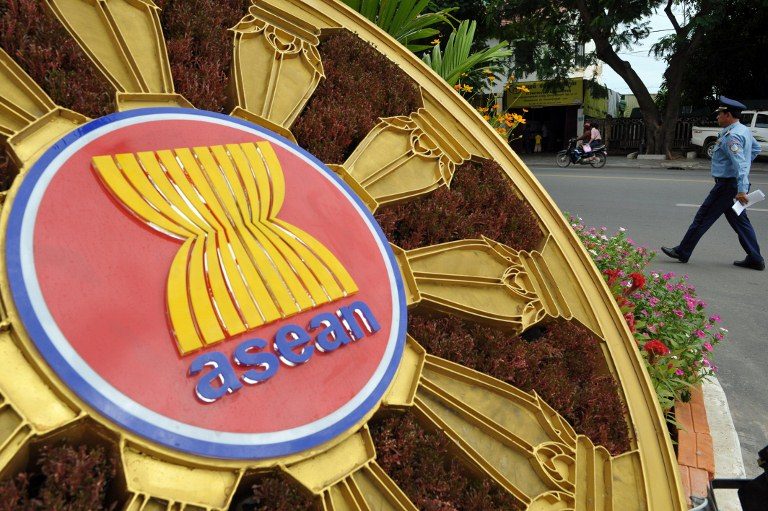SUMMARY
This is AI generated summarization, which may have errors. For context, always refer to the full article.

NAYPYIDAW, Myanmar – Southeast Asian finance ministers vowed vigilance on April 5, Saturday in the face of economic risks such as capital outflows caused by the US Federal Reserve’s “tapering” of its massive monetary stimulus.
Officials said the 10-member Association of Southeast Asian Nations (ASEAN) was well-placed to withstand the winding down of the US quantitative easing program, at a meeting that underscored host Myanmar’s return to the international diplomatic stage.
The region’s economic outlook “remains robust, anchored by rising domestic demand stemming from private consumption and infrastructure investment,” the ministers said in a joint statement.
“We remain vigilant in managing the downside risks, including capital outflows, volatile currency movements, emerging inflationary pressures and tightening financial conditions, which could dampen economic growth,” they added.
Some emerging economies, such as Indonesia, suffered sharp capital outflows and losses to their currencies after the Fed began to reduce its massive stimulus program, as the world’s largest economy emerges from a crippling financial crisis.
Indonesian Finance Minister Chatib Basri said that, as well as the tapering, the region must be ready for the possibility of the Fed raising its policy interest rate in the future.
“This may have an impact on the capital outflows from emerging markets, including ASEAN, back to the US,” he told reporters.
But he added that ASEAN has made preparations for the shift in US policy, stressing the importance of tackling fiscal and current account deficits as well as maintaining sound financial institutions.
Under quantitative easing, the Fed “creates” money to buy government debt from financial institutions, which helps lower long-term interest rates, in theory stimulating the economy by encouraging companies and individuals to borrow.
Last month the US central bank reduced its stimulus spending by another $10 billion, to $55 billion a month, saying the economy was strong enough to support an improving jobs market.
Strong fundamentals
Low interest rates in the West following the 2008-2009 financial crisis prompted investors to seek out higher returns elsewhere, such as in buoyant emerging economies such as Indonesia, the Philippines and Thailand.
With markets now turning their attention to the prospect of rising interest rates in the United States, the fear is that a rapid repatriation of investment funds could send stock markets and currencies sliding in emerging Asia.
But experts note that so far the impact has been limited, thanks partly to the region’s efforts to strength its defenses since the 1997-98 Asian Financial Crisis.
“The macro-economic fundamentals of ASEAN countries are strong — much stronger than in 1997,” Asian Development Bank president Takehiko Nakao said at the meeting.
“Governments have pursued sound macro-economic policies. Banks are well capitalized. Financial regulations and supervisions have been strengthened. Countries now enjoy larger foreign reserves.”
After the initial tremors sparked by the start of US tapering, announced in December, financial markets in Southeast Asia have since shown signs of stabilizing.
“Countries are trying to take efforts to shore up their fiscal positions and I think international investors have noticed that. Some of the volatility is being muted,” Tony Nash, managing director at IHS Consulting in Singapore, said.
The ADB expects the ASEAN region to show economic growth of 5.0 percent in 2014 and 5.4 percent in 2015.
“Domestic demand of ASEAN countries is solid. The US recovery continues to strengthen. The eurozone will return to positive growth this year and Japan’s economy today is stronger than before,” Nakao said.
ASEAN, which represents a region of 600 million people, wants to establish a common market and manufacturing base to better compete with China and India.
The ministers brushed aside doubts about whether a 2015 target to create an ASEAN Economic Community will be achieved, saying they were committed to meeting the goals.
Myanmar, for years a source of embarrassment for ASEAN’s more democratic states, took over the rotating chairmanship of the regional bloc this year after reforms that included freeing hundreds of political prisoners. – Rappler.com
Add a comment
How does this make you feel?
There are no comments yet. Add your comment to start the conversation.